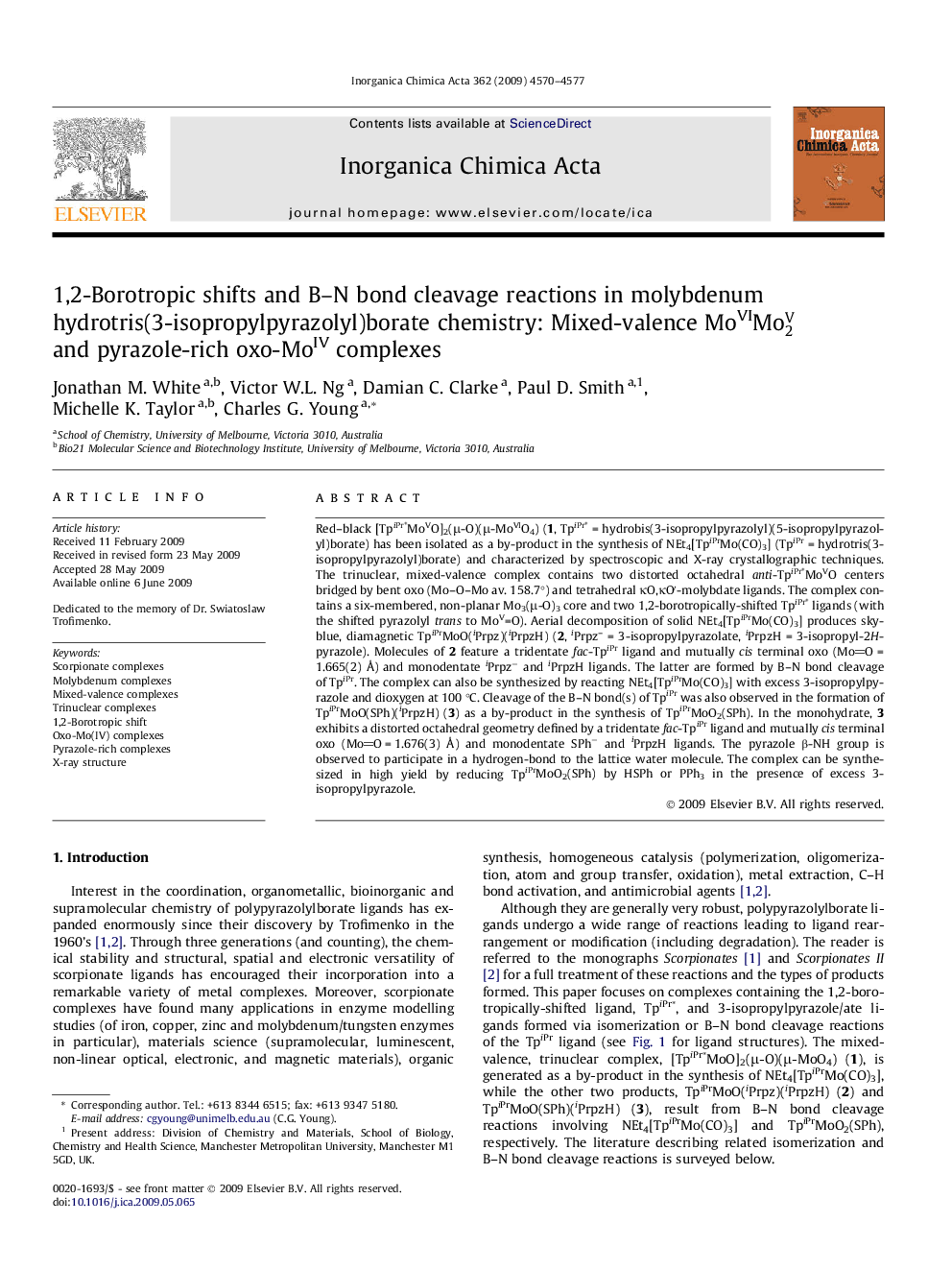| Article ID | Journal | Published Year | Pages | File Type |
|---|---|---|---|---|
| 1309577 | Inorganica Chimica Acta | 2009 | 8 Pages |
Red–black [TpiPr∗MoVO]2(μ-O)(μ-MoVIO4) (1, TpiPr∗ = hydrobis(3-isopropylpyrazolyl)(5-isopropylpyrazolyl)borate) has been isolated as a by-product in the synthesis of NEt4[TpiPrMo(CO)3] (TpiPr = hydrotris(3-isopropylpyrazolyl)borate) and characterized by spectroscopic and X-ray crystallographic techniques. The trinuclear, mixed-valence complex contains two distorted octahedral anti-TpiPr∗MoVO centers bridged by bent oxo (Mo–O–Mo av. 158.7°) and tetrahedral κO,κO′-molybdate ligands. The complex contains a six-membered, non-planar Mo3(μ-O)3 core and two 1,2-borotropically-shifted TpiPr∗ ligands (with the shifted pyrazolyl trans to MoV=O). Aerial decomposition of solid NEt4[TpiPrMo(CO)3] produces sky-blue, diamagnetic TpiPrMoO(iPrpz)(iPrpzH) (2, iPrpz– = 3-isopropylpyrazolate, iPrpzH = 3-isopropyl-2H-pyrazole). Molecules of 2 feature a tridentate fac-TpiPr ligand and mutually cis terminal oxo (MoO = 1.665(2) Å) and monodentate iPrpz− and iPrpzH ligands. The latter are formed by B–N bond cleavage of TpiPr. The complex can also be synthesized by reacting NEt4[TpiPrMo(CO)3] with excess 3-isopropylpyrazole and dioxygen at 100 °C. Cleavage of the B–N bond(s) of TpiPr was also observed in the formation of TpiPrMoO(SPh)(iPrpzH) (3) as a by-product in the synthesis of TpiPrMoO2(SPh). In the monohydrate, 3 exhibits a distorted octahedral geometry defined by a tridentate fac-TpiPr ligand and mutually cis terminal oxo (MoO = 1.676(3) Å) and monodentate SPh− and iPrpzH ligands. The pyrazole β-NH group is observed to participate in a hydrogen-bond to the lattice water molecule. The complex can be synthesized in high yield by reducing TpiPrMoO2(SPh) by HSPh or PPh3 in the presence of excess 3-isopropylpyrazole.
Graphical abstractMixed-valence [TpiPr∗MoO]2(μ-O)(μ-MoO4) (1) is a by-product in the synthesis of NEt4[TpiPrMo(CO)3], while 3-isopropylpyrazole complexes, TpiPrMoO(iPrpz)(iPrpzH) (2) and TpiPrMoO(SPh)(iPrpzH) (3 (not shown)), result from B–N bond cleavage of TpiPr.Figure optionsDownload full-size imageDownload as PowerPoint slide
